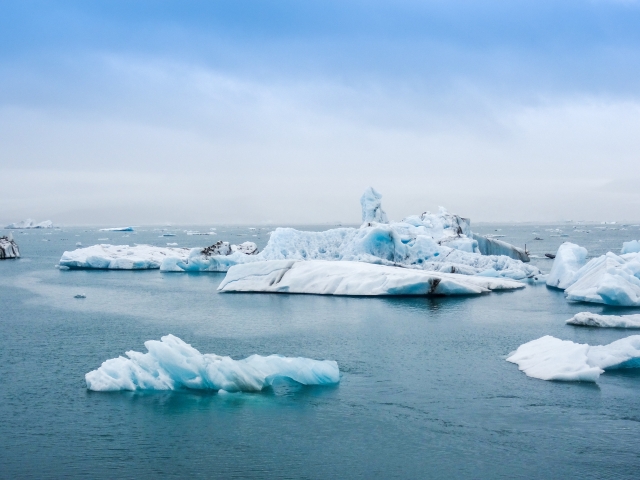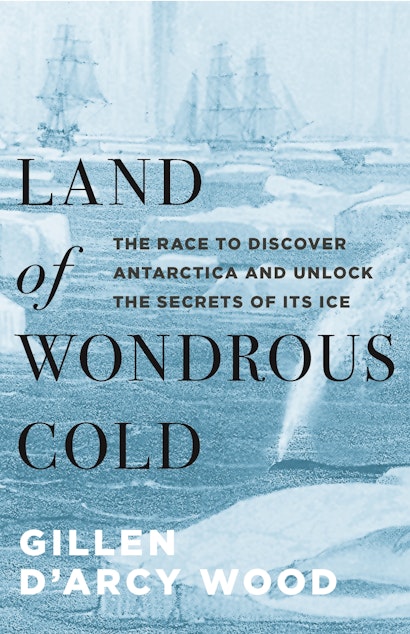The day I visited Mt. Erebus in Antarctica was Instagram perfect: cold but sunny, and barely a breath of wind. The ever-present polar sun glinted off the pure icy waters of the Ross Sea, and sparkled like diamonds across the slopes of the iconic volcano Sir James Ross named after his doughty ship, which was the first to reach this shore, the southernmost coast on Earth, in January, 1841. My fellow visitors were preoccupied with the well-preserved explorers’ hut, located at the foot of Erebus, from where Robert Scott set out on his ill-fated mission to the South Pole in 1912. But my thoughts were with Ross and Antarctica’s first discoverers. Also, deeper than that, I found myself reflecting on the glacial history of Antarctica itself, spanning millions of years. In such an inhospitable, remote place, it was hard to comprehend that human life, in a sense, all began here with the ice…
In the first years of Queen Victoria’s reign, the British Admiralty had sent Ross to the South Pole on account of his decade’s worth of experience in the Arctic. He was to plant the flag, and scout for possibilities for British whalers, even a site for a new colony. But aside from accustoming him to the frigid cold, nothing in the Arctic prepared Ross and his men for the extraordinary scale and brutality of the Antarctic ice. In the far north, much of the Arctic archipelago west of Baffin Island is low lying, sandy, and barren. Antarctica, by contrast, is an Alpine continent, the most mountainous on Earth. Those endless peaks, in turn, are draped by a near unbroken canopy of ice stretching thousands of miles in all directions, terminating in the massive glacial cliffs and ice shelves bordering the Southern Ocean. The devout Ross and his crew viewed their remarkable journey in this glacial landscape through a spiritual lens, as a divine revelation of Earth’s beginnings. They weren’t far wrong.
In all, the Antarctic ice cap holds 70% of the world’s freshwater locked in reserve. At the foot of Mt. Erebus, you look to the left and see the Ross Ice Shelf, the size of France; to the right, the Trans-Antarctic Mountains, like the great, bleak shoulders of Atlas bearing the world’s mightiest glaciers. To call the sight awe-inspiring is not to do it justice. A single glance, even the five weeks boat tour I took in Ross’s wake, cannot begin to comprehend the Antarctic ice cap, surely the most mind-boggling physical phenomenon on our planet of wonders.
For James Ross, Antarctica was sublimely remote from all human troubles (including a secret teenage fiancé he had left behind in England). But in our modern age of global warming, we don’t have that luxury. Much has been written about the fate of the southern polar ice cap this century, particularly its sensitive glacial rim, which, if even a fraction were to melt, would inundate the world’s great coastal cities from Boston to Alexandria to Shanghai. Given this well-founded alarm about Antarctic-driven sea-level rise, it’s worth reflecting also—as I did in my charmed hour on Erebus’s snow-blown slope—on the longer history of our dependence on the Antarctic ice cap, which in fact stretches back beyond our beginnings, to the very origins of a human-habitable planet. This is the story I tell, alongside Ross and his rival Victorian explorers, in my new book, Land of Wondrous Cold.
Forty million years ago, Antarctica was virtually ice free, and inhabited by an extraordinary menagerie of long-extinct creatures who reveled in its temperate warmth and lush vegetation. Then, a world-altering event occurred. Antarctica broke its hold from the South America and Australia, creating a circumpolar ocean, and isolating itself in deep and lonely cold. The growing ice cap in turn, through its influence on global weather systems, created our modern climate as we know it, shrinking tropical zones, and initiating novel fauna and flora regimes in which we cold-adaptive human beings, ultimately, would flourish. In ancient Antarctica, marsupials roamed thick, beech-tree forests, and giant, man-size penguins swam along the beaches of Erebus. The disappearance of this world more than thirty million years ago allowed for the gradual emergence of new plants and animals across all continents, and a more seasonal diversity of climates in which we recognize our own.
Standing at the foot of the glacial fortress of Mt. Erebus, as I did, or just seeing images of Antarctica on your TV or smartphone, it’s easy to lapse into thinking of the cold beauty of the ice continent as something utterly removed from humanity. There’s a beguiling charm, even a thrill, in that remoteness. But climate change teaches us a different lesson about our connection to Antarctica, as does the long history of its ice cap, which first set the global thermostat to human specifications millions of years ago. Our fates are, in fact, intimately joined. We are ice. The ice is us. And Mt. Erebus, first glimpsed by Sir James Ross a mere hundred and eighty years ago, is, on the scale of deep time, our glacial home.
Gillen D’Arcy Wood is professor of environmental humanities at the University of Illinois, Urbana-Champaign, where he serves as associate director of the Institute for Sustainability, Energy, and the Environment. He is the author of Tambora: The Eruption That Changed the World (Princeton). Originally from Australia, he lives in Urbana, Illinois, with his wife and two children.

